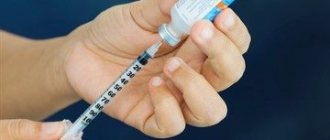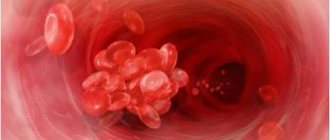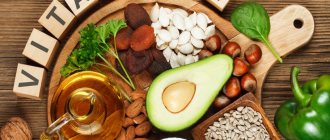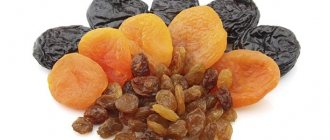Increases or decreases blood pressure
It has been proven that lingonberries lower blood pressure in hypertensive patients! Berries have a positive effect on blood vessels, normalize their tone and protect against the harmful effects of waste and toxins.
In addition, the berry has a diuretic effect, which has a beneficial effect on the cardiovascular system. It removes excess fluid well from the body, thereby reducing pressure on the walls of blood vessels. The berry contains a large amount of vitamins and minerals necessary for older people to protect the walls of veins and blood vessels from destruction and distensibility.
To get the maximum benefit from this berry with high blood pressure and not harm your health, you need to use it correctly.
| Interesting Facts | |
| Lingonberry fruits and leaves are used to treat many chronic diseases. | It is better for people with high acidity and stomach problems to avoid using it. |
| Lingonberry juice, leaves, juice and raw berries are very useful. | It is better not to use for people with low blood pressure. |
| Saturates the body with vitamins, improves intestinal motility, normalizes blood pressure, improves sleep, corrects the failure of the central nervous system, strengthens the walls of veins and blood vessels, kills fungus, and improves kidney function. | Long-term use for chronic diseases requires consultation with a doctor. |
The effect of lingonberries on the functioning of the cardiovascular system
The use of folk remedies to prevent the development of cardiovascular diseases is used along with medications. The beneficial effect of lingonberries on strengthening the walls of blood vessels, as well as preventing blood liquefaction and the formation of blood clots, has long been proven.
For blood pressure
The fruits contain salicylic acid, which in moderate quantities thins the blood, and also, in cooperation with other vitamins included in the product, helps eliminate cholesterol and toxins.
Also read about how raspberries, ginger and dill affect blood pressure.
Thanks to blood thinning, it is possible to lower the pressure inside the vessels, which leads to an improvement in the general condition of the body and eliminates: migraines, nausea and weakness that accompany the disease.
On vessels
Potassium, which is part of lingonberries, helps strengthen the walls of blood vessels and normalizes the functioning of the myocardium. The fiber contained in the fruit helps cleanse the capillaries of toxins. The use of lingonberry-based decoctions prevents the formation of blood clots, thereby preventing the development of cardiovascular pathologies.
Benefits for hypertensive patients
Lingonberry is a unique berry, as it retains its medicinal properties in any form, even after heat treatment.
Hypertensive patients can eat:
- frozen berries;
- fresh fruits;
- berry decoctions;
- tea from lingonberry leaves.
Lingonberry is part of the most famous antihypertensive preparations, which are sold in pharmacies.
The most popular and easiest way to get all the beneficial properties of this berry is to eat it fresh. To prevent hypertension, it is recommended to eat 20-40 g of berries daily. Then within a week it will be possible to notice the first results from such therapy and stabilization of blood pressure.
At the same time, frozen berries are also effective. If possible, collect a large number of berries in wildlife - a dry coniferous forest or peat bogs.
When properly frozen, the berries retain their beneficial properties for up to 6 months.
The benefits and harms of lingonberries
- Benefits of lingonberries for the body:
- decreased blood pressure;
- antipyretic effect;
- anti-inflammatory and antifungal effect;
- astringent effect;
- improving the condition of the skin;
- regulation of metabolic processes in the body;
- regulation of vitamin and mineral balance during colds.
- Possible harm from taking lingonberry-based products:
- excessive decrease in pressure (with hypotension);
- increased acidity;
- heartburn and nausea;
- allergy;
- headache.
Traditional recipes for blood pressure
Effective lingonberry recipes:
- Berries ground with sugar. Wash and sort the ripe lingonberries and place them in boiling water for 5 minutes. Grind the still hot berries through a sieve and mix with sugar 1:1. Heat over low heat until the sugar is completely dissolved and fill sterile jars with this healthy treat. Use as a preventative against hypertension and drink with tea 2-3 times a day.
- Lingonberry and honey jam. Place the washed berries in boiling water for a few minutes, then transfer them to an enamel pan along with the rest of the ingredients. A better calculation is that for every kilogram of berries there should be 700 g of honey, 1 glass of water, 1 teaspoon of lemon zest and 3 buds of cloves. Cook over low heat until tender, then transfer the jam into sterile jars.
- Tea made from lingonberry leaves. For a glass of boiling water you need to take 1 teaspoon of crushed leaves. Infuse the brew for 30 minutes, after which you can safely enjoy the healing drink. Take 100 ml of tea before meals - 2-3 times a day.
- Lingonberries with honey. Grind the berries through a sieve or using a blender, dilute with water - 1:1 and add honey to taste. Take during the day for high blood pressure.
- Lingonberry tincture. Place fresh, washed berries in a saucepan and place in the oven. Leave to simmer at low temperature for 30 minutes. After this, you need to squeeze the juice out of the berries and dilute with alcohol and honey. It is better to use 1 tablespoon of additives per 1 liter of juice. Store the tincture in the refrigerator and take 50 ml three times a day.
- Soaked lingonberries. Rinse the berries in cold water. Dissolve 20 g of salt and 40 g of sugar in 1 liter of boiling water and cool. Place berries in the marinade, add a few slices of sour apples, pepper and cinnamon to taste, and put pressure on top. Keep the berries in this position for a week, and then transfer them to a cool place and leave for 25 days. Consume 1 tablespoon of berries 2-3 times a day for high blood pressure.
- Tincture from lingonberry leaves. Pour 0.5 liters of water into 50 grams of leaves and stems of the plant and cook for 20 minutes over low heat. Then cover with a lid and leave for 6 hours. Strain and consume 100 ml of tincture three times a day.
All these recipes are designed to alleviate the condition of a patient with hypertension, lower blood pressure and strengthen the cardiovascular system.
Berries for hypertension, hypotension
The pulp of the fruit contains all the necessary components to improve the functioning of the hematopoietic system and heart.
Doctors still have disagreements about whether lingonberries increase or decrease blood pressure. After all, this healing berry has a beneficial effect on the circulatory system. When consumed in small doses, it can help hypotensive patients.
When stored properly, lingonberries do not lose their beneficial properties for a long time. The berries are placed in the freezer, filled with water and placed in the cold, ground with sugar.
The daily norm, which has a healing effect, is 2-3 teaspoons of fruit. Processed fruits (fruit juice, jam) can be consumed as desired in reasonable quantities.
See also Grapefruit: does it increase or decrease blood pressure?
Lingonberries reduce blood pressure if you take undiluted fruit juice several times a day.
If you grind the berries and add honey, you will get a tasty remedy for blood pressure, to strengthen strength after illness, to prevent colds, and vitamin deficiency.
Traditional medicine presents many medicinal recipes from this amazing berry: tinctures, decoctions, infusions, fruit drinks.
Fill the berries with plain water and refrigerate. In a few days you will get an excellent fortified drink.
Try lingonberry juice. Mash the berries thoroughly, add water, strain, add sugar and honey to taste. This tasty drink not only quenches thirst, but is also a mild diuretic.
Beneficial features
Lingonberries contain many useful vitamins and microelements that have a beneficial effect on the heart and the body as a whole.
Among them are the following substances:
- benzoic and salicylic acids – have antiseptic properties;
- copper, zinc, chromium and iron - reduce blood glucose levels, increase hemoglobin and prevent the development of serious vascular diseases;
- vitamins A, C, E – prevent the occurrence of respiratory diseases and help in their treatment;
- glycoside arbutin – treats diseases of the genitourinary system;
- polyphenol and flavonol – being the strongest antioxidants, they cleanse the body of free molecules.
Having so many beneficial properties, lingonberries are an excellent folk remedy for treating the most common diseases.
Medicinal properties of lingonberries - main characteristics
The medicinal properties of lingonberries are due to the rich content of vitamins and minerals in the berries and leaf plates, which are used to prepare medicines. The presence of vitamin C helps strengthen the immune system and prevents infection with viral diseases during the winter. Magnesium, zinc and calcium strengthen the nervous system and bone tissue.
Important! The high iron content in lingonberry berries helps increase hemoglobin levels in the blood and prevents anemia.
The presence of benzoic acid has an antiseptic effect and will help reduce fever during colds. Thanks to the presence of phytoncides, vitamins A and E, the skin becomes firm and elastic. This composition has a rejuvenating effect, so lingonberries are often used as the main or auxiliary component in face masks.
Yagod
Depending on the variety, lingonberries ripen from early August to early September. The fruits are spherical in shape and bright red in color. The berries can reach up to 8 mm in diameter and weigh up to 10 g.
| Microelements | Vitamin composition |
| Iron | A nicotinic acid |
| Manganese | Beta carotene |
| Magnesium | Tocopherol |
| Zinc | Thiamine |
| Potassium | Riboflavin |
| Phosphorus | Folic acid |
| Sodium | Ascorbic acid |
Chemical properties per 100 g of product:
- calories - 47 kcal;
- proteins - 0.7 g;
- fats - 0.4 g;
- carbohydrates - 8.2 g.
Leaves and branches
Lingonberry bush is an evergreen crop belonging to the Heather family. The plant reaches a height of only 30 cm. Its leaf blades are up to 3 cm long and 1.5 cm wide. The shape is obovate or oval with a pointed end and inwardly curved edges. The upper part of the leaf is dark green, the reverse side is light, matte in color. The stems of the plant are thin, light green.
| Content of vitamins and organic acids | Nutrient balance |
| Thiamine | Manganese |
| Riboflavin | Magnesium |
| Pantothenic acid | Calcium |
| Pyridoxine | Potassium |
| Folic acid | Chromium |
| Cyanocobalamin | Zinc |
| Retinol | – |
| Tocopherol | – |
| Ascorbic acid | – |
| Organic acids | – |
| Benzoic acid | – |
| Kholin | – |
| Phytoncides | – |
Chemical composition of leaves and branches per 100 g:
- calories - 46 kcal;
- proteins - 0.7 g;
- fats - 0.5 g;
- carbohydrates - 8.5 g.
Did you know? Attempts to cultivate lingonberries in Russia were made back in the 18th century, but they were not successful, and only in the 60s of the 20th century botanists managed to grow this variety.
Contraindications
While lingonberries rarely cause side effects in healthy people, those suffering from chronic diseases should be careful. People with digestive and urinary system disorders should not consume the berry.
It is not recommended to include berries in your diet without the consent of your doctor:
- hypotensive patients;
- suffering from hyperacid gastritis;
- patients with renal and heart failure;
- if you have kidney stones;
- with inflammation of the gallbladder.
Allergic reactions caused by lingonberries are rare!
But it is better to refrain from using it excessively. Due to their beneficial properties, these berries are successfully used in the treatment of other diseases, and are also used in cosmetology. It is also useful for patients with diabetes, as it can lower blood sugar levels. Author of the article Svetlana Anatolyevna Ivanova, general practitioner











